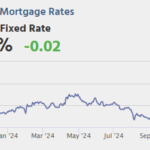In today’s fast-paced technology environment, sticking to legacy systems can leave financial institutions falling behind. With payment methods and regulations evolving rapidly, banks need to stay ahead of the curve or risk being left behind in the game.
The need for modernization is being driven by several key factors, including the transition to ISO 20022, the rise of open banking, and the introduction of central bank digital currencies (CBDCs).
Additionally, financial institutions must adapt and differentiate themselves in a crowded market by designing and delivering superior customer experiences. Reducing time to market to respond to changing market dynamics and quickly launch new digital products is essential to staying competitive.
driving force of change

ISO 20022 has become the global standard for payments messaging, with two-thirds of real-time payment systems around the world already using ISO 20022. master card. The benefits of ISO 20022, such as improved communication between banks and payment systems, are leading even companies not currently using ISO 20022 to plan to upgrade.
In the United States, the Federal Reserve’s FedNow system, released in July 2023, follows the clearinghouse RTP network adopted by more than 285 financial institutions. PwC We predict that cashless payments in the US and Canada will nearly double by 2030.
European banks will soon have to introduce new instant payment regulations with prescriptive deadlines or face penalties.
In the era of instant money transfers, the need to modernize payment infrastructure is critical. Banks are developing both short- and long-term strategies to capture these opportunities, addressing not only the demand for instant payments but also the need for improved messaging standards, regulatory compliance, and agility to adapt to emerging technologies and market trends. must also be addressed.
Strategy for platform modernization
However, modernizing your payment platform can be difficult. There are usually two main approaches.
The first approach is a complete change of the system, and several different strategies can be adopted to achieve it.
The second approach is to modernize only specific components of the system rather than the entire platform.
This may include launching a particular product or portfolio, or within a particular country or region. The choice of modernization strategy depends on the balance of risks and benefits of each approach.
Here are some examples of strategies financial institutions can consider.
1. Big bang transition
A big bang transition involves a single, definitive switch from an old platform to a new platform. This approach requires careful planning and extensive testing to ensure a smooth transition. If executed well, it can be efficient, but the risk of interruption and failure is high.
2. Parallel running
With this approach, banks run old and new systems simultaneously for a period of time, allowing for real-time comparisons and gradual migration. This strategy provides a safety net because new system issues can be addressed without disrupting ongoing operations. However, it can be resource intensive and complex to manage.
3. Incremental modernization
Incremental modernization involves updating payment system components in stages, rather than overhauling the entire platform at once. This strategy allows banks to start with a specific portfolio or function, such as credit and debit card processing, and gradually migrate other elements. The advantage is that there is less immediate risk, but careful planning is required to avoid integration problems.
4. Gradual migration by product/service
This strategy involves migrating or launching certain products and services (credit cards, corporate cards, etc.) to a new platform. This gives you control over segments of change, reduces risk, and allows you to focus your attention on each product migration. The disadvantage is that duplex systems require longer maintenance periods.
5. Selective migration by customer segment
Banks can choose to migrate specific customer segments (such as high-net-worth individuals or corporate customers) first before rolling out the new platform to a broader customer base. You can also consider this approach to expand your activities and start working in other regions and other countries. This strategy allows for targeted testing and optimization prior to future full-scale implementation. The challenge lies in managing different segments on different platforms.
catch up
Modernizing payment systems is essential in a rapidly evolving financial environment. Banks and financial institutions must carefully evaluate their strategies to remain competitive while managing risk.
Whether through big bang migration, parallel execution, incremental modernization, phased migration, or selective migration, each approach has its own benefits and challenges.
By choosing the right strategy that is flexible and adaptable to your organization’s specific needs, you can position your organization for future success.
Featured image: Edited from freepic








